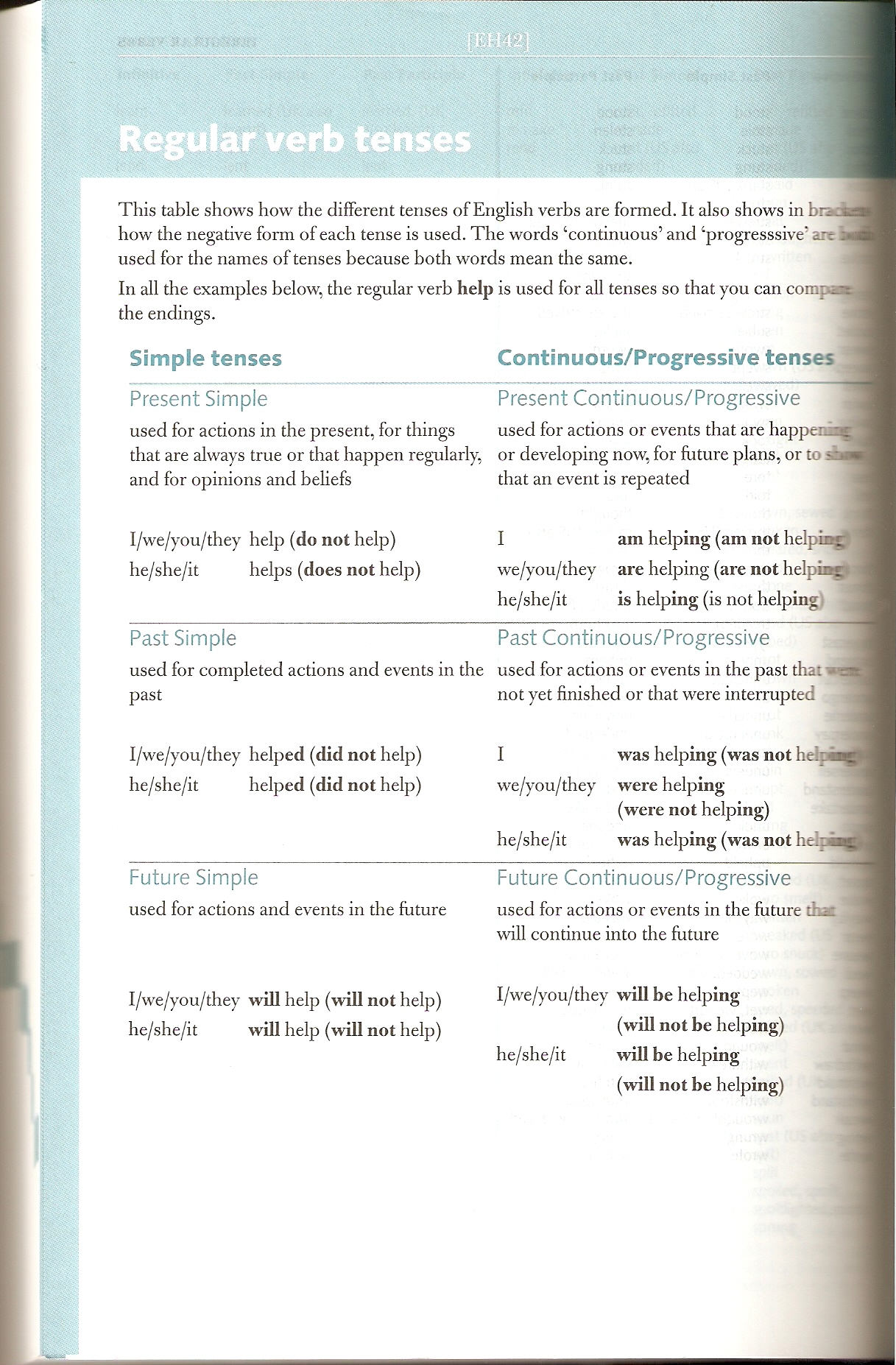grammar

This table shows how the different tenses of English verbs are formed. It also shows in be how the negative form of each tense is used. The words ‘continuous’ and ‘progresssiveławf used for the names of tenses because both words mean the same.
In all the examples below, the regular verb help is used for all tenses so that you can compaJ the endings.
Simple tenses Present Simple
used for actions in the present, for things that are always true or that happen regularly, and for opinions and beliefs
Present Continuous/Progressive 1
used for actions or events that are happeo^H or developing now, for futurę plans, or to that an event is repeated
I/we/you/they help (do not help) he/she/it helps (does not help)
I am helping (am not helpiafl
we/you/they are helping (are not helping^ he/she/it is helping (is not helping)^
Past Simple Past Continuous/Progressive
used for completed actions and events in the used for actions or events in the past thaH past not yet finished or that were interrupted J
I/we/you/they helped (did not help) he/she/it helped (did not help)
Futurę Simple
used for actions and events in the futurę
I/we/you/they will help (will not help) he/she/it will help (will not help)
I was helping (was not hełpiH
we/you/they were helping
(were not helping)
he/she/it was helping (was not heł|q^|
Futurę Continuous/Progressive. i used for actions or events in the futurę dnd will condnue into the futurę
I/we/you/they will be helping
(will not be helping) he/she/it will be helping
(will not be helping)
Wyszukiwarka